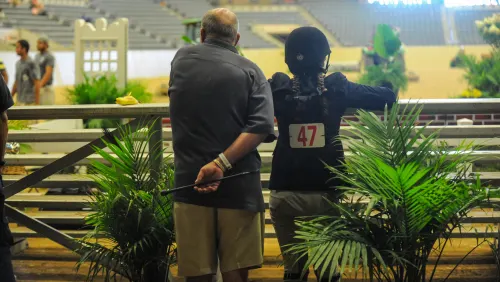 The best part of my day is walking into the barn to feed, in the morning or in the evening, and hearing that familiar, low-throated nicker of my favorite horse, who’s been in our barn for almost eight years now. It’s a welcome like no other, and it’s one of the things I like most about keeping our horses at home.
The best part of my day is walking into the barn to feed, in the morning or in the evening, and hearing that familiar, low-throated nicker of my favorite horse, who’s been in our barn for almost eight years now. It’s a welcome like no other, and it’s one of the things I like most about keeping our horses at home.
It’s a good thing home horse care includes those joys, because, man, does it have responsibilities too. It means that every day you have to feed them, muck them out, turn them out, bring them in, and check on their feet, legs and tummies. It sure puts limits on your life, because they can be pretty picky about their precious little schedule of eating and going out or coming in.
Keeping horses at home means you always have to be there to see to these little needs of theirs, or else you have to arrange for someone else to do it for you if you’re going to be away on vacation or business, or you have to work late, or you have be somewhere out of the ordinary in the morning or the evening.
Of course, just being there isn’t nearly enough, especially if you’re actually trying to do something, like compete, with your horses. That gives you the responsibility of fathoming the myriad of things you could or should do to a horse you’re training or competing. And it seems to me that in some ways horse care was simpler 20 or 30 years ago. For one thing, there was a much narrower range of diagnostic tools.
Basically, your veterinarian looked at your horse and commanded, “Jog him.” And if he wasn’t lame, you put him back to work. If he was, you gave him time off. We didn’t have ultrasound and infrared and MRIs and a bunch of other things to dig deep into the equine system.
Same with treatment. Most injury treatment was simple–time off, retire him, or put him down. (OK, I exaggerate slightly.) We didn’t have the wide range of non-steroidal anti-inflammatory drugs or the cornucopia of joint supplements, nutraceuticals and other supplements. Now, in addition to whatever your veterinarian prescribes, you can go to any supply company or tack store catalog and thumb through page after page of supplements and topical lotions and potions to put on legs, feet, hooves and hair.
ADVERTISEMENT
Trying to make sense of it all is one reason why we put together this Horse Care Issue every year and why we regularly publish our Horse Care section.
All the different kinds of care, maintenance and treatment we can do for our horses can be overwhelming, confusing and frustrating–kind of like a lot of our attempts at training them.
That brings me back to my original point about keeping horses at home. You see, it’s all about how they walk up to you with that expectant, trusting look on their big faces. It’s a particularly emotionally satisfying and poignant feeling when they do, one that’s different than the look dogs give you. Dogs’ greetings are needier, more sort of a desperate relief, and the dog personality is more straightforward and absolute. You can be the most useless person in the world, but your dog will still love you.
But not a horse. Despite their power, they have to trust you to greet you warmly.
And it’s that connection that makes caring for those great consumers of grain, hay and grass so worth the responsibility of keeping them in a barn that’s just a few steps out the door.














